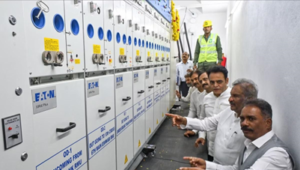Daily News Analysis.
International Day To Protect Education From Attack 2023
News: Every year on September 9, the United Nations General Assembly proclaims the day as the International Day to Protect Education from Attack.
- It was started in reaction to the increasing number of assaults on educational facilities and schools around the world.
- These assaults can take a variety of shapes, such as occupation, bombing, and shelling.
- They may also involve the enlistment and exploitation of youngsters in hostilities.
- The International Day to Protect Education from Attack was established on September 9 by Resolution 74/275, which was approved by the UN General Assembly on May 28, 2020.
- The commemoration of this International Day provides an annual forum for enhancing advocacy and igniting action for the defense of education and long-lasting peace for all.
Resolution 74/275
- By its terms, the Assembly vehemently denounced all assaults on educational facilities and their use for military operations where they violated international law.
- It reaffirmed the need to protect and respect educational facilities in conformity with international law and acknowledged that access to high-quality education in humanitarian catastrophes can support long-term development goals.
- The United Nations Educational, Scientific and Cultural Organisation (UNESCO) and the United Nations Children’s Fund (UNICEF) were both invited to serve as facilitators of the observance each year.
- In addition, the Assembly invited Member States, the United Nations, the private sector, and civil society to observe the International Day in an appropriate manner.
- The Assembly emphasized that all expenses associated with carrying out the resolution should be covered by voluntary donations.
SBI Unveils Nation’s First Transit Card for Digital Fare Payments

News: With the introduction of the “Nation First Transit Card,” State Bank of India (SBI), the largest lender in the nation, has made a substantial contribution to improving the commuter experience and encouraging the adoption of digital payments.
- This cutting-edge card offers simple digital ticketing fare payments across a variety of modes of transport, including the metro, buses, water ferries, parking and more, all through a single card.
- It is meant to allow seamless and pleasant consumer commuter experiences. The card can also be used to pay for goods and services in stores and online.
- Customers of SBI are now able to use their debit cards as convenient travel cards on Metro Rail and Buses wherever this service is offered thanks to the NCMC feature. On March 4, 2019, this programme was formally launched.
State Bank of India
- The State Bank of India (SBI), the largest commercial bank in India, holds a special place in the nation’s contemporary commercial banking system.
- It is a Fortune 500 corporation with its headquarters in Mumbai that provides public sector banking and financial services.
- SBI has a long history dating back more than 200 years, making it the bank that Indians have the most faith in.
- SBI, India’s largest bank, provides services to over 45 crore customers through a sizable network of more than 22,000 branches. The bank’s fundamental principles of Service, Transparency, Ethics, Politeness, and Sustainability guide its unrelenting focus on innovation and customer-centricity.
History Of SBI
- The three Madras, Bombay, and Bengal Presidency Banks were combined to become the Imperial Bank of India in 1921.
- The Imperial Bank of India carried out a number of central banking tasks in addition to its typical commercial banking duties until the Reserve Bank of India was founded in 1935.
- It once served as a clearinghouse, a banker’s bank, and the government’s banker.
- The Imperial Bank of India gave up its central banking duties once the Reserve Bank of India was established, although it continued to represent the Reserve Bank in regions where it had no branches.
- The government officially decided to nationalize the Imperial Rank on December 20, 1954.
- On July 1, 1955, the government adopted the advice and nationalized the Imperial Bank of India to create the State Bank of India.
- Eight significant State linked banks were eventually merged with the primary bank as subsidiary banks after the State Bank of India (Subsidiary Banks) Act was passed in September 1959.
- Which were: The Bank of Patiala, the Bank of Bikaner, the Bank of Jaipur, the Bank of Rajasthan, the Bank of Saurashtra, the Bank of Indore, the Bank of Baroda, the Bank of Mysore, the Hyderabad State Bank, and the Travancore Bank.
Country’s First Underground Power Transformer In Bengaluru Installed

News: The nation’s first underground transformer center was officially opened by Energy Minister KJ George, marking a significant advancement in the city’s electricity distribution infrastructure modernization.
- The underground transformer center, which is situated at 15th Avenue in Malleswaram, is the result of a partnership between the Bruhat Bengaluru Mahanagara Palike (BBMP) and the Bangalore Electricity Supply Company Limited (BESCOM).
- This ground-breaking project, with a budget of Rs 1.98 crore, has a transformer with a 500 KVA capacity. Underground power transformer stations have historically been more common in Western nations, where governments place a high priority on citizen comfort and safety.
- This cutting-edge center, which is 10 feet below the surface of the road, raises the bar for electricity distribution. The station has an oil-free transformer with a 500 KVA capacity, an 8-way solid-state ring main unit, a 5-way LT distribution box, a UPS, a water pump, and an air control system. The civil works were funded in part by BBMP’s contribution of Rs 64 lakh, and the project as a whole was finished in just 365 days.
BESCOM
- Power distribution in eight districts of Karnataka (Bangalore Urban, Bangalore Rural, Chikkaballapura, Kolar, Davanagere, Tumkur, Chitradurga, and Ramanagara) is the responsibility of BESCOM, the Bangalore Electricity Supply Company Limited.
- The business operates out of 4 operating zones: Chitradurga Zone, Bangalore Rural Area Zone, Bangalore Metropolitan Area Zone (North), and Bangalore Metropolitan Area Zone (South). It also has 9 circles, 32 divisions, 147 subdivisions, and 534 section offices.
- Karnataka started a significant reform of the power sector in 1999. The Karnataka Power Transmission Corporation Limited (KPTCL) was created as a first step after the Karnataka Electricity Board (KEB) was disbanded.
- In November 1999, the Karnataka Electricity Regulatory Commission (KERC) was established as a result. In June 2002, the transmission and distribution operations run by KPTCL were separated as part of the next stage of the reform process. To distribute power in Karnataka, four new distribution corporations were established.
- Bangalore Electricity Supply Company Limited (BESCOM) started operating on June 1, 2002, taking over from KPTCL the duty of distributing electricity in 8 districts.
A Book On UP CM Yogi Adityanath Creates History With 67 Launches.
News: ‘Ajay to Yogi Adityanath,’ a recently released graphic novel, set a record for the most book launches and is now listed in the Asia Book of Records.
- Yogi Adityanath, the chief minister of Uttar Pradesh, is the subject of this outstanding book by acclaimed novelist Shantanu Gupta, which explores his life and traces his rise from modest origins to the pinnacle of political leadership.
- In addition to seven sites in the National Capital Region (NCR), this novel has been released at 29 locations throughout Uttar Pradesh.
- On June 5, 2023, the same day as Chief Minister Yogi’s 51st birthday, an opening ceremony was held at more than 51 locations throughout 25 districts in Uttar Pradesh.
- The journey of Ajay Singh Bisht, a little child born in the Uttarakhand hinterland along with six other siblings, is the subject of the book “Ajay to Yogi Adityanath.”
Highlights of the book
|






